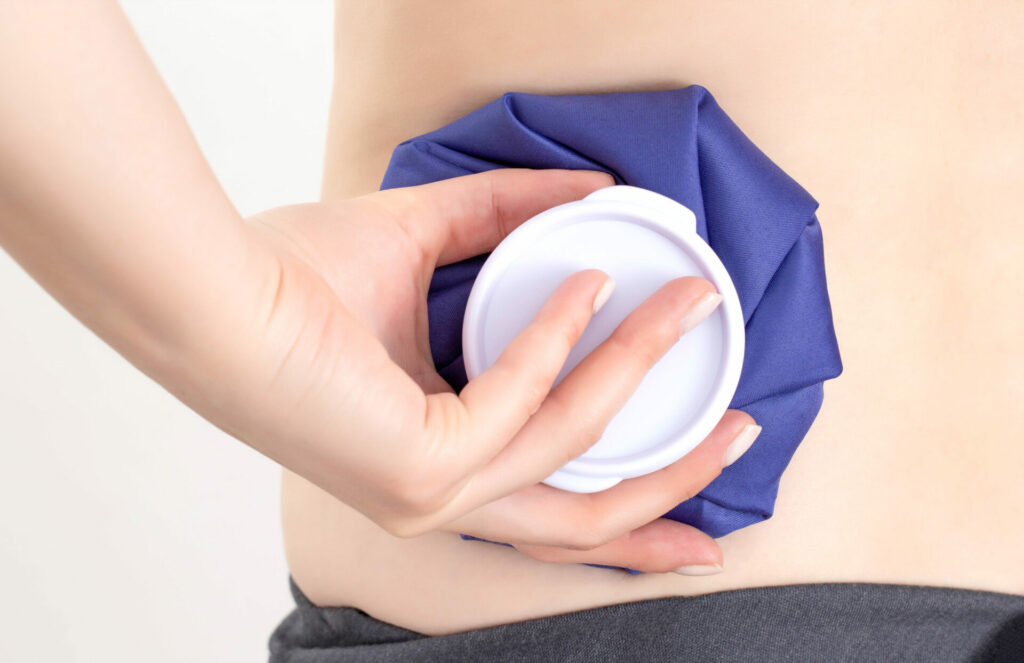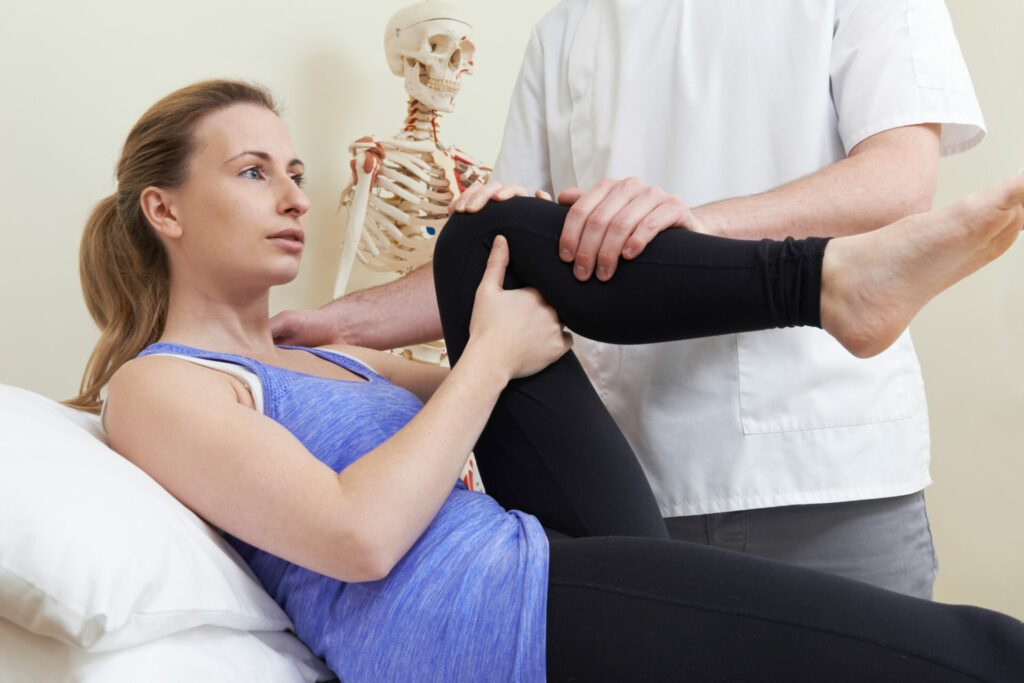Hip pain is a leading cause of discomfort and disability in the UK, with almost 100,000 hip replacements carried out in 2022 [1]. Of these, more than 91% were for patients with osteoarthritis — a condition that causes your cartilage to break down, leading to swelling, stiffness, and pain in the hip joint.
Cortisone injections for hip pain can ease pain and swelling in the hip joint, reducing the need for surgical hip replacement. So they’re becoming increasingly popular with patients who have chronic or severe hip pain, especially as recent research shows steroid injections for hip pain can improve symptoms more effectively than other current treatments [2].
Learn everything you need to know about cortisone injections for hip pain, including:
- How cortisone injections for hip pain work.
- What to expect when you get cortisone injections for hip pain.
- Injection side effects and risks.
- How to prepare for a hip cortisone injection.
Table of Contents
- What is a cortisone injection and how does it treat hip pain?
- What to expect from a cortisone injection for hip pain
- What is the success rate of hip cortisone injections?
- Side effects and risks of cortisone injections in the hip
- Can I walk after a cortisone injection in my hip?
- How painful is a cortisone injection?
- How to prepare for a hip injection
What is a cortisone injection and how does it treat hip pain?
Cortisone is a type of corticosteroid used to treat inflammation. It mimics the actions of cortisol, a hormone your body produces naturally in response to stress and injury.
Injecting cortisone into the hip joint reduces swelling around the bone, easing discomfort and stiffness so you can move more easily.
Hydrocortisone is a similar compound that may also be injected for hip pain. While there are differences in how the body processes these compounds, the results tend to be fairly similar.
What to expect from a cortisone injection for hip pain
Whether you have a scheduled cortisone injection, are on an NHS waiting list, or are considering private treatment for hip pain, here’s what to expect when getting a cortisone injection in your hip.
1. Assessment and diagnosis

If you haven’t yet been prescribed a steroid injection, you’ll need a medical assessment first. This usually involves reviewing your medical history and undergoing a physical exam. In some cases, you might also be offered other diagnostics and imaging tests to discover or rule out certain conditions.
Your doctor can then diagnose your condition and confirm if cortisone injections are suitable for you. At Harley Street Specialist Hospital, we can often assess, diagnose, and treat you on the same day. So you can avoid long NHS waiting lists and get fast hip pain treatment.
2. The injection

Your doctor will inject hydrocortisone directly into your hip at the site of swelling. To find the best position to administer the medicine, you may be offered an ultrasound-guided injection. Using an ultrasound machine, your medical team can pinpoint the area(s) of pain and swelling to ensure the steroid is as effective as possible.
You might also be given a local anaesthetic to numb the hip area for a few hours while the steroid treatment takes effect.
3. Immediately after the procedure

If you’ve been given lidocaine (or another local anaesthetic), your hip will feel numb for a few hours after treatment. This often means you can’t drive until the sensation returns.
Your hip might feel a bit sore for a few days after the anaesthetic wears off. This is completely normal — the cortisone will soon kick in and you’ll feel much less discomfort. In the meantime, you can use ice packs, heat packs, and over-the-counter painkillers to manage your pain.
4. 1-2 days after your cortisone hip injection
It’s a good idea to rest after a cortisone injection for at least 24 hours (or longer if you need to). This will help the steroid take effect in your hip while stopping it spreading to other areas of your body.
Some people report a flare-up of pain around 24-48 hours after their injection. This is known as a cortisone flare, and it affects approximately 20% of patients (younger patients are more likely to experience cortisone flare) [3].
Cortisone flares aren’t usually a cause for concern. You can manage it with ice and painkillers, but if you’re worried, mention your symptoms to your doctor.
5. 3-7 days after your cortisone hip injection

Within a week, you should start to feel the pain easing. One study found more than 60% of patients saw improvements within three days, while almost 94% had pain relief within a week [3].
From this point, your hip pain should settle for around three to six months [4]. Ongoing support from a physiotherapist can extend the duration of pain relief and help you strengthen your hip joints.
What is the success rate of hip cortisone injections?
Hip cortisone injection success rates vary in different studies. One research review found that while 20% of patients showed no response to cortisone injections for hip pain, 50% had immediate pain relief lasting up to two weeks, and the remaining 30% had pain relief that lasted more than two weeks [5].
Another study found 75% of hip pain patients had pain relief one month after their cortisone injection [4]. This decreased to 33% after three months.
Cortisone injections for hip pain appear to be very successful in the short-term, but results wane over time. So you need to create an ongoing treatment plan to keep pain at bay. Consultants at our pain management unit can work with you to create an effective long-term treatment plan for chronic hip pain.
Side effects and risks of cortisone injections in the hip
Cortisone injections come with a few possible side effects and risks. Bruising is the most common side effect, but this is expected and will clear up by itself without treatment. Cortisone flare (a painful sensation that affects the injected joint) affects around one in five patients, but it usually goes after one or two days.
More serious side effects that might need medical attention include:
- Infection (symptoms include fever, swelling, chills, or pus around the injection site)
- Depression or other mental health-related symptoms
- Weight gain in the upper back and/or belly
- Facial puffiness
- Swelling or throbbing in your arms or legs
- Vision changes
You can minimise the risk of these side effects by resting after your injection. This can stop the body absorbing too much cortisone into the bloodstream and other unwanted areas.
Seek advice from your doctor if you experience any of these side effects after your hip cortisone injection.
Can I walk after a cortisone injection in my hip?

If you feel well enough, you can walk short distances (e.g. from the hospital to your car, or from your car to your front door) after a hip cortisone injection. However, all patients are advised to rest as much as possible for at least 24 hours after a cortisone injection in the hip.
When your hip feels better, you can start walking after your injection. Start with short distances at a slow pace to avoid overexertion, sprains, and strains.
How painful is a cortisone injection?
You’ll probably feel a scratch as the injection is given, but the eventual relief usually outweighs this. Cortisone flares can be painful, but they tend to ease after a day or so.
Most people aren’t offered sedation for a hip cortisone injection, as the pain is generally tolerable and the sedative effects may outweigh the benefits.
How to prepare for a hip injection
Planning to have a cortisone injection to ease your hip pain in the near future? Here’s how you can prepare to get the best from your procedure.
- Get assessed, diagnosed, and treated at the same facility — Being treated by the same team (also known as care continuity) can give you better healthcare outcomes and higher satisfaction rates [6].
- Check your vaccination schedule — If you’re due to have a vaccination around the same time as your cortisone injection, mention this to your doctor. Some vaccinations can interact with steroid injections and increase your risk of side effects.
- Discuss other medications — Mention any other medications (including over-the-counter painkillers) you’re taking to your doctor to avoid drug interactions.
- Discuss other medical conditions — Cortisone injections can interact with treatments for other health problems, such as diabetes. If you’re diabetic, your doctor should discuss possible complications and how you can manage these effectively.
- Find out if you’re pregnant — If there’s a chance you could be pregnant, let your doctor know. You might still be able to have a cortisone injection, but your doctor needs to know so they can support you to make the best care decisions for you and your baby.
- Eat and drink normally — There aren’t usually any food restrictions before or after having a cortisone injection in your hip.
- Wear loose fitting trousers — Make sure your doctor can easily access your hip by wearing the right clothing.
Need more advice on what to do about hip pain? Our pain management unit can help. With the UK’s largest selection of consultants at our disposal, we can give you excellent, continuous care to alleviate hip pain stemming from arthritis, injury, and other conditions. Book an appointment to find out more about hip pain treatments at Harley Street Specialist Hospital.




